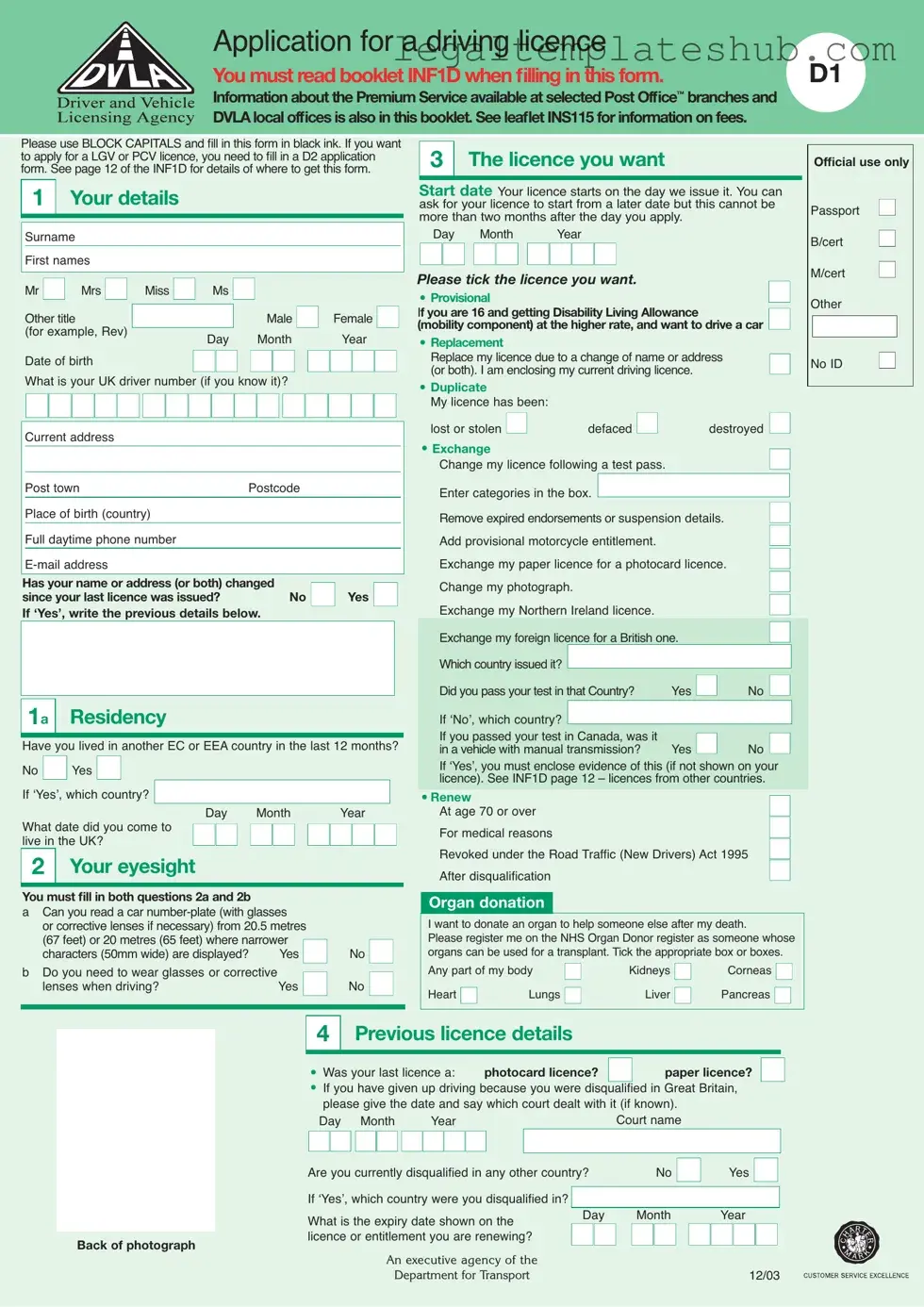Blank D1 Dvla PDF Form
The D1 DVLA form is an essential application used for obtaining a driving licence in the UK. This form requires accurate personal details, including your name, address, and medical history, to ensure you meet the necessary requirements for safe driving. To proceed with your application, please fill out the form by clicking the button below.
Access Editor
